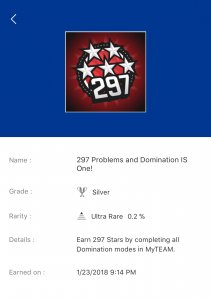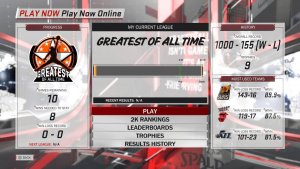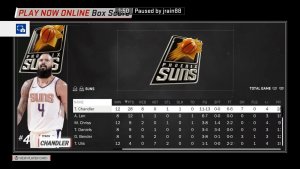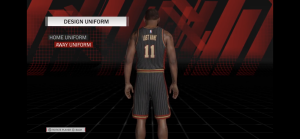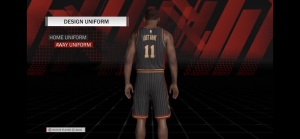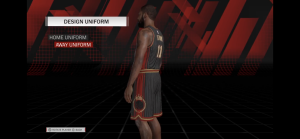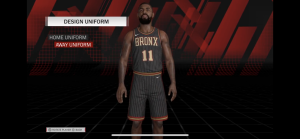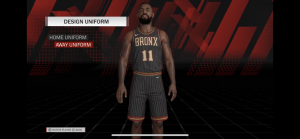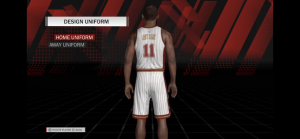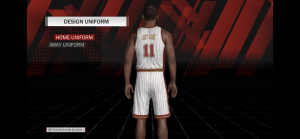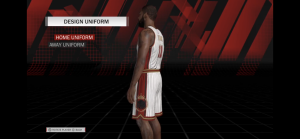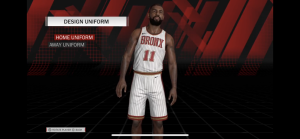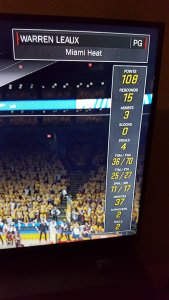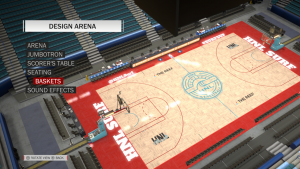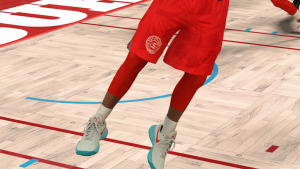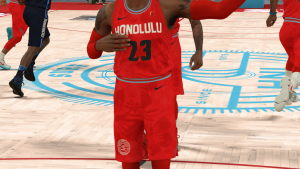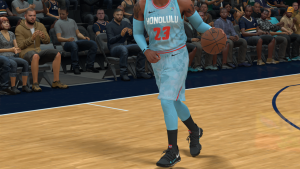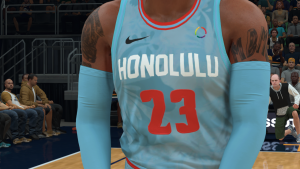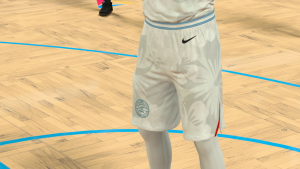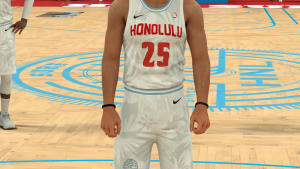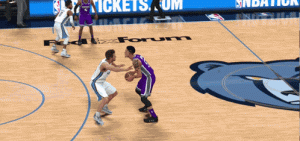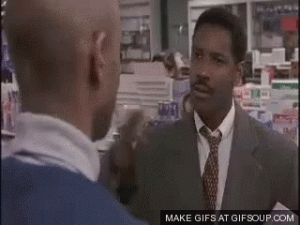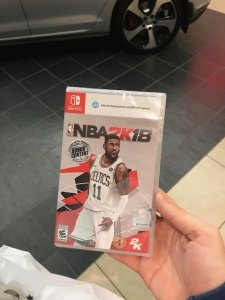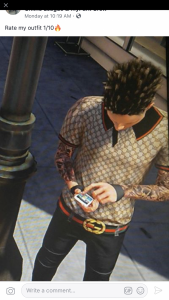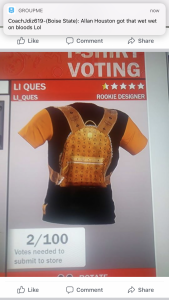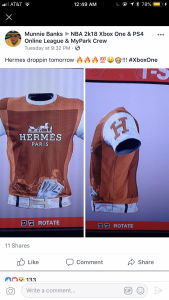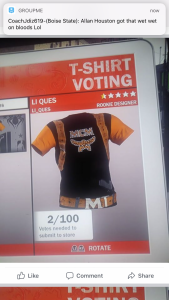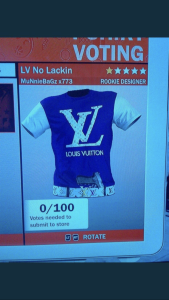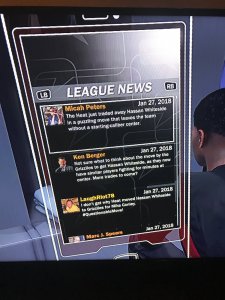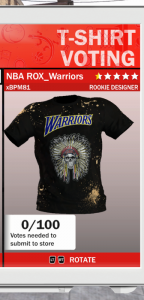NBA 2K18
Breaking Down The Big Gameplay Improvements Coming To NBA 2K18
Preview
by
Matt Bertz on August 06, 2017 at 03:47 PM
The game mechanics in sports video games are always a major point of contention with fans of the sport. Some worship the altar of realism above all, dissecting every mechanic to reveal whether it serves the master of authenticity. Others prefer a more streamlined experience that values fun over whether or not a particular player can get up the court in four or six seconds. The NBA 2K series has always straddled that line deftly, which is why every year the franchise continues to be a critical and commercial success.
Despite its accolades, developer Visual Concepts sees plenty of room for improvement. For NBA 2K18, the studio is making meaningful changes to nearly every element of gameplay. It even took a jackhammer to one of the most integral systems in the game – player motion.
I recently traveled to Visual Concepts' Novato, California headquarters to get my first glimpse of NBA 2K18 and talk to developers about the myriad improvements they have planned for this year. Here are the standout elements.
Enhanced Player Accuracy
Playing on the more powerful PS4 Pro console certainly didn't hurt, but the first thing that hit me firing up NBA 2K18 was the graphical fidelity and attention to detail. The courts feature vibrant colors that glisten under the bright arena lights. Player likenesses take another dramatic leap forward, as you can see in the above side-by-side comparison of Celtics forward Gordon Hayward in NBA 2K17 (left) versus NBA 2K18 (right)
recently tweeted by Operation Sports guru Steve Noah. Even the jersey colors look deeper. The game also appears to have more diversity in body types and hair styles. This is unquestionably the best-looking sports game on the market.
Revamped Player Motion
Basketball is a fluid sport played by some of the best athletes on the planet. Emulating NBA players' incredible feats of skill while still giving users control of their movements is the holy grail of basketball games, but no matter how good NBA 2K looks, there are always some longer-playing animations that feel like they rob you of stick skills for a nanosecond. Targeting this shortcoming is the predominant reason why Visual Concepts decided to write a new motion system for NBA 2K18.
"We've been accused of being animation heavy at times, and this year we've done a good job of making the game feel like you are in complete control," says NBA 2K18 gameplay director Mike Wang.
To do so the team created a new physics-focused system that always accounts for a player's size, acceleration, and speed before compiling the animations available in a particular circumstance. "We have complete control over this thing instead of just the animations that play out," Wang says. "Sometimes in the past you'd try to cut and it might be really fast or really slow based on whatever animation you happened to get. So this year the animations are kind of being built on the fly. We throw all these animations into a blender essentially, and there is nothing predetermined with it. It's all built as you move around the court. To get that to look just as good as it has always looked is where the challenge was, but I think the feel is one of the first things that is immediately apparent to people. When they play, it just feels like you are completely in control of your guy now. You're not a slave to whatever animations fire off."
The fluidity of motion and differentiation in player ability in NBA 2K18 were the next things I noticed after the dramatic increase in graphical fidelity. Players leading a fastbreak don't seem to lose momentum as easily as they did in the past when receiving a pass. It's easier to blow past defenders with elite players like Russell Westbrook, but shutdown defenders like Jimmy Butler are hard to shake.
"We're not all the way there, it's going to take time to make it perfect, but I think we're taking a big step in the right direction to making it feel like you're in complete control of your guy," Wang says. "Things like fastbreaks, transitions, the half-court offense, the flow of the game, the entire pace, it all kind of just works itself out and it fixes a lot of the problems that I think people had with 2K17. Last year people complained about the fact that if you got a certain dribble crossover first step animation, then you'd get a huge advantage because you shoot forward. Stuff like that made the game feel cheap. If you got the right animations to play out, that's what made you better than someone else. We didn't want that to be the case, so that's why the motion system was so crucial."
Smarter Shooting
The skill-based shooting mechanic of NBA 2K17 worked for some but pissed off a great many others, leading to an endless stream of updates where Visual Concepts tried to find a solution that made everyone happy. This year, the studio went back to basics.
"Last year we tried to push that skills matter, and I think we went so far with it that it was all about stick skills, and we kind of lost a little bit of what it meant to have a really good rating and shooting in the right context with the right guy," Wang says. "We looked at it like skill, and a player's skill should be about more than hitting a button and timing it at the right time. That's what last year really was. If you hit the button at the right time and timed it at the right time then you'd get the green flash and make every shot, so we were chasing our tails trying to reel it in so we still had realistic numbers. We just had a hard time getting there. This year it's more about the context, about your player attributes, your badges, taking the right shots at the right moments. Timing's a huge factor, but it's not everything. So this year it's just better balanced across the board in terms of getting the right outcomes based on what you're doing with the sticks."
A new shooting feedback system gives you the context to understand why your shot did or didn't go in. Immediately after shooting, a stat bar appears at the top of the screen that tells you how good your release was and how contested the shot was. Visual Concepts has some work to do in making sure shot contesting is accurately reflected – I saw some instances where a small guard like Tyus Jones was able to strongly contest a stretch big like Dirk Nowitzki – but overall I think it's a smart addition. Pairing this with the shot meter (that now appears by the shooter's head) should result in plenty of feedback to guide users.
Deeper Passing Controls
The passing system in NBA 2K has always given players a ton of control, whether via using icon passing, stylish dishes, bounce passes, lobs, or alley oops. Wang says NBA 2K18's passing benefits greatly from the new motion system. "Motion was actually huge boon to passing because we can predict movement so much better," he says. "It wasn't doing weird things like spiking or slowing down too much based on some of the animations. It's much more predictable, so it helps the passing system a lot."
This year's game also introduces even more variation in the way you can dish dimes. Sometimes the standard passing mechanic has a hard time determining whether or not you are intending to pass to the near or far player in a particular direction. This year you can control where the pass goes by how long you hold the basic passing button. Tapping it directs the ball to the nearby player, while holding it will attempt the longer pass. Be wary of attempting long passes with unskilled passers – I felt awkward big men were even worse at initiating transition offense with outlet passes than in previous years, and the defense is more confident in jumping passing lanes for a quick steal.
Advanced players can take advantage of a new passing featured tied to the Circle/B button. Holding this button down gives you control of the targeted pass recipient, allow you to steer them behind the ball handler for a hand-off or cut aggressively to the basket. Releasing the button then releases the pass.
Dirtier Paint Play
Strength matters in NBA 2K18. If your pick and roll play creates a mismatch and you suddenly have a talented big like Karl-Anthony Towns lined up against an overmatched and undersized guard like Isaiah Thomas, you can post them up and bang them right through the paint to the basket with minimal resistance. Wang says Visual Concepts also put a lot of emphasis in opening up the triple threat possibilities for skilled big men. "With the new footwork there's a lot more you can do," he says. "The up and under game, the hook, the Hakeem Olajuwon where you fake a shot and do a step through – there are all kinds of things you can do."
Freer Ball Physics
Whether it's a football, soccer, or basketball game, loose balls always seem tricky to program. Often times the ball seems to gravitate toward a particular player animation rather than reward the user who makes the best attempt at the ball. During my limited time with NBA 2K18, I saw several new circumstances where the ball would pop free, and the subsequent animations that played out looked much more realistic. "That's one thing we felt like is an exciting thing in basketball that we weren't capturing very well – the 50-50 balls – so we spent a lot of time revamping," Wang says. "When the ball does pop free, there's all this cool stuff that can play out. Guys can get shoved while they are chasing the ball down for a loose ball foul. You'll see guys tripping over each other and multiple chaining of guys diving for the ball and it's still popping free. That scramble is what makes the game feel like there's a lot of hustle in 2K18."
Better Defensive Coordination
One of the most useful additions to NBA 2K18 is actually turned off by default to preserve the broadcast look of NBA 2K18, but I strongly recommend hardcore fans turn defensive communication on in the menu system. This feature creates chatter among your defenders, calling out who they take on fastbreaks, whether to go over or under a screen, etc. that may help you shave off dozens of points against. "The idea was to try and make it like you're playing with other humans and these humans are communicating to you," Wang says. "That was the whole idea. In real life, a huge part of playing defense is just communication. Teams that communicate are usually better defensive teams, so that is what we really wanted to translate into the game."
The revamped coaching menus also give you more feedback than ever before about what adjustments to hedging, screens, double-team rules, etc. do to your team. Diagrams and short, descriptive sentences should help casual curious users get up to speed on the types of defensive philosophies basketball teams practice.
Not every player in the NBA is good at following rules, so don't expect everyone to do the right thing all the time. Visual Concepts is making sure the lazier defenders stay true to life via a new system they jokingly refer to as "artificial stupidity." If a player has low defensive awareness and isn't paying attention to a cutting ball handler blowing past their defender, they will be late to offer help defense. This is going to make defensive stoppers more valuable than ever before.
Coaches Matter More Than Ever
Over the last several years, Visual Concepts has gotten better at making sure players make the same kinds of decisions as their real-world counterparts, whether that be Steph Curry pulling up for quick threes early in the shot clock, chaotic guards like Russell Weskbrook challenging defenses in myriad ways, or stretch bigs being willing to step back behind the three-point line and pull the trigger on the perimeter. Now the studio has turned its attention to making coaches feel more authentic as well.
A new menu called system proficiency gives you the breakdown of what system each coach prefers to run. Each of the many systems (like defense, triangle, perimeter centric, etc.) comes with its own set of bonuses and negative effects based on how well the coach runs the system and how well the players fit into that scheme. You can quickly understand how good a coach is with a particular scheme via the five-star rating he has, and players have a colored rating that ranges from red to green that tells you how well they fit into that system.
To make sure the systems fit the real-world NBA schemes, Visual Concepts polled coaches, players, and managers around the league. This new system will play a key role in adding talent via either the draft or free agency in MyGM. If your coach's system doesn't fit your roster, you may also want to look at bringing someone in who can maximize your team's potential with a different system. System proficiency also plays a role in roster formation in MyDynasty MyTeam. "This is stopping the Iverson/Kobe/Jordan lineups being on the floor at the same time," says designer Scott O'Gallagher. "We know that's not going to work."


















